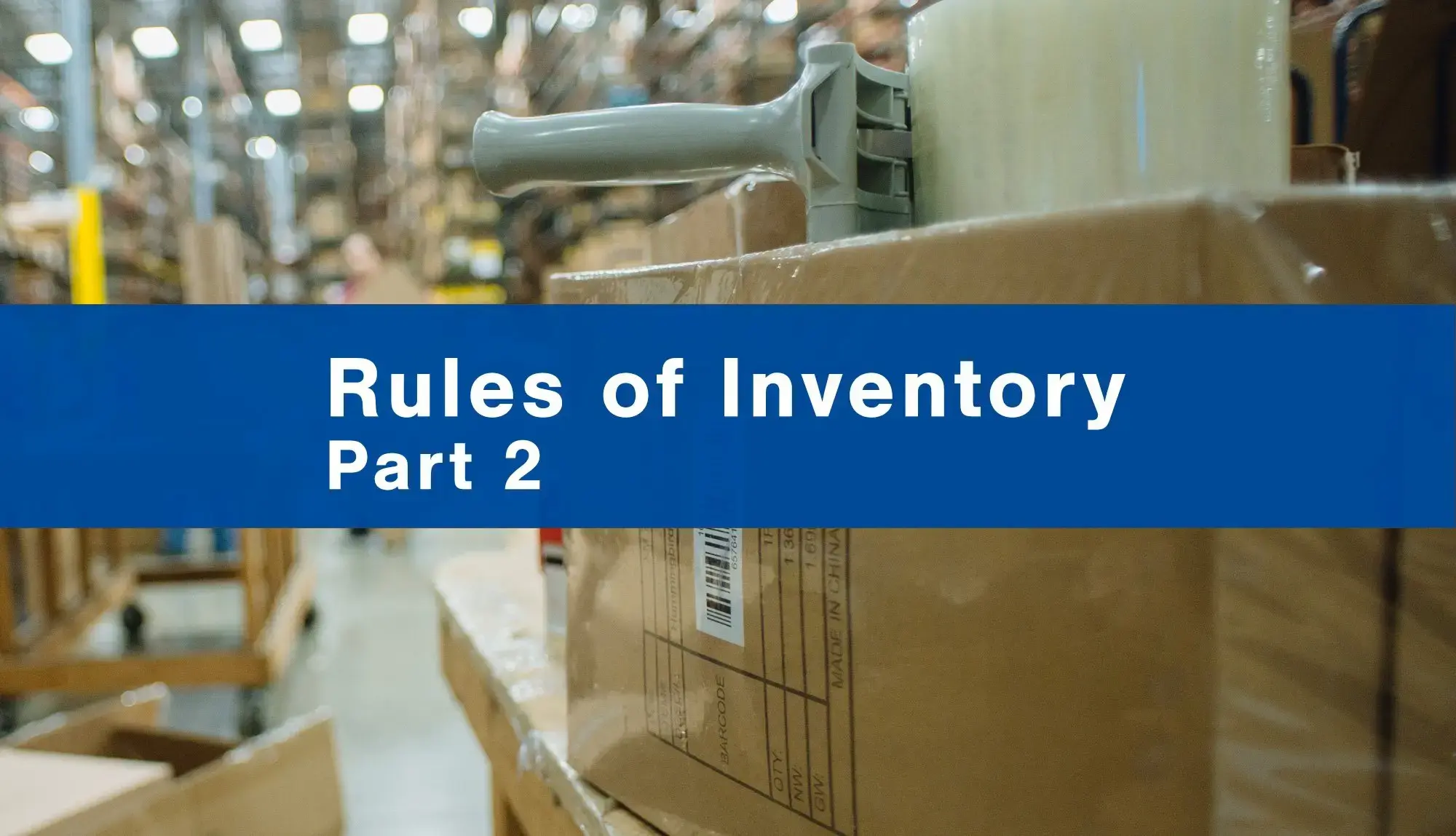The First 3 Rules of Inventory --- Rule #2: Don’t Overstock

When trying to determine ideal warehouse inventory levels, going Out of Stock is a bad thing---it leads to backorders, which stalls the transaction and ultimately leads to unsatisfied consumers. Rule #1 of inventory is “Have enough inventory to meet demand.”
Management’s impulsive response to constant Out of Stock or Low Stock levels is to ramp up acquisition so as to build an inventory “cushion” (increasing On Hand quantities). But this situation can be just as bad for business. That is why Rule #2 of inventory is:
Don’t Overstock
Why is it bad to have too much inventory in your stock? For one thing, having lots of extra inventory means that you have capital tied up, not available for other things. Pinched cash flow makes doing business that much more difficult.
But there are hidden costs to having too much inventory as well. Lots of extra inventory means lots of warehousing—warehousing that would not be needed if your company had more realistic inventory levels. Extra inventory could also mean a shift in demand, meaning that the inventory must eventually be sold at a steep discount.
For example: an online vendor specializing in cell phone batteries and accessories finds that they are routinely running low on cases and batteries for the latest model of a smartphone. To avoid this, they triple their order sizes…and the next order arrives two days after the smartphone company announces a newer model. The newer model has a different battery and is a different size, meaning that the old model cases will not fit. Over time, sales of the accessories for the older model drop off.
Now this vendor is left with excess inventory in the warehouse. What are the vendor’s options?
Try to return the excess for a refund or credit. Some suppliers might work with merchants, giving them a refund or credit. But the refund or credit is rarely for the full amount spent, and the vendor is often on the hook for shipping the returned items.
Trade with other companies in the same space. Perhaps a competitor or discount seller would love the excess stock. While this frees warehouse space, the vendor might be selling goods at a steep discount.
Liquidate or auction the items. While this gets rid of items quickly, the vendor will be selling their goods for pennies on the dollar.
Donate the items. The idea behind donation is to take a loss on the items themselves and recoup some of the cost via a tax deduction for charitable contribution. This only works with some items, however, and finding a charity that will take the stock can be difficult. Meanwhile, the vendor still has to store the items.
What this example shows is that Overstock can be a costly pain. There are many reasons why an item might stop moving: seasons change, tastes change, a newer model comes out, and so on. If you have too much of a cushion, you might be stuck with items that never move.
The optimal response to having too little inventory, then, is not to increase inventory levels to give yourself a cushion. Avoiding this situation means having an inventory system that can identify demand, safety stock levels, and both minimum and maximum order requirements for each SKU. It should also track order lead times and costs so that restocking can happen exactly when needed.
If walking the fine line between Out of Stock and Overstock were the whole story, the answer to the question “How much stock should I carry?” would be straightforward. There is a complicating element here: having accurate real time data. Items in your inventory are like money in the bank: the trouble happens when you mistaken about how much you really have.
You might have several of the above “stock” and “inventory” issues. In that case, you should check out our “8 Tragically Common Mistakes in Warehouse Setup” to avoid common mistakes in your warehouse setup.
That’s why Rule #3 of inventory is: Know Thy Inventory.
In the meantime, if you are interested in 3pl software solutions that can tackle some of these problems, and a demonstration of in action, contact us.
.png?width=225&height=60&name=Logo%20(7).png)


